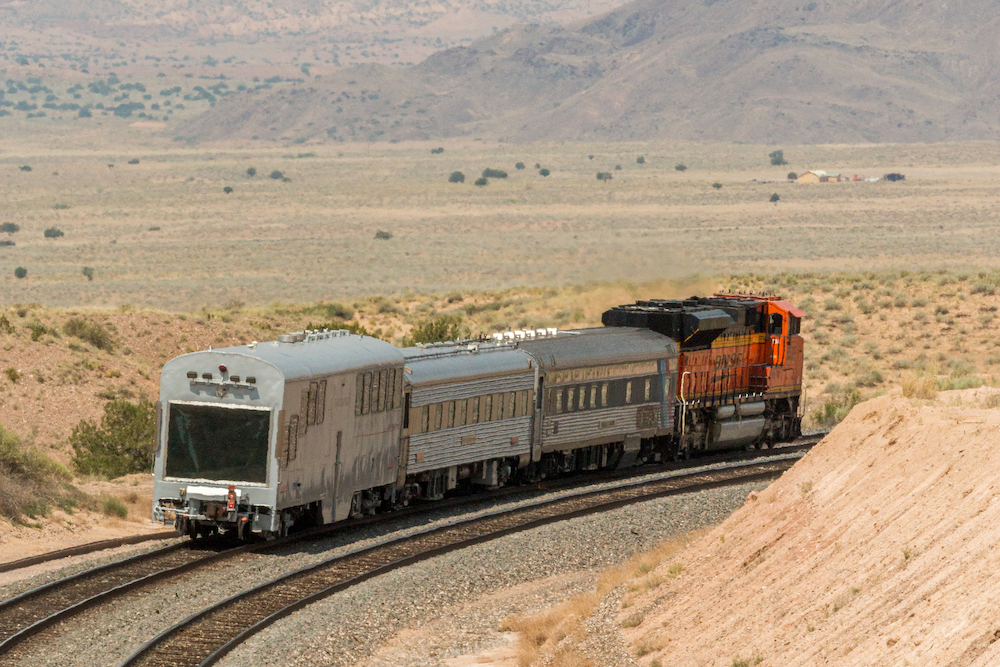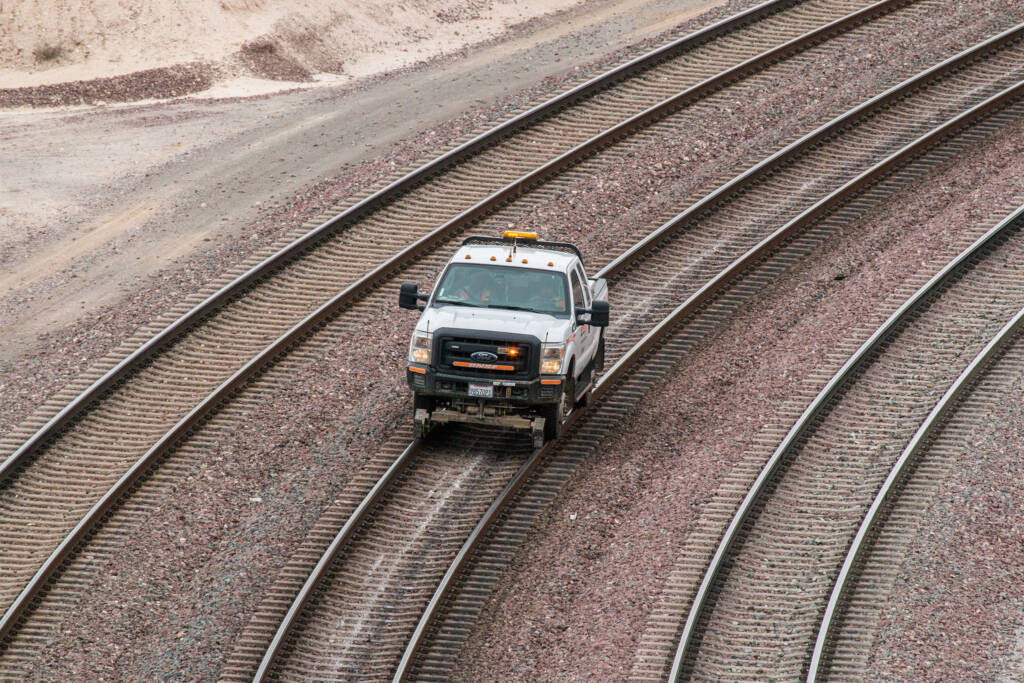
WASHINGTON — A federal appeals court has ordered the Federal Railroad Administration to allow BNSF Railway to expand its automated track inspection program while simultaneously reducing the frequency of traditional visual inspections.
Railroads are permitted unlimited use of automated track inspection systems that rely on lasers and other technology to find track geometry defects. But without a waiver from the FRA they cannot simultaneously scale back the required frequency of visual inspections of main lines.
In 2018 the FRA granted BNSF an inspection waiver that covered seven segments of track totaling 1,348 miles on its Powder River Division in parts of rural Nebraska and Wyoming. The waiver enabled BNSF to reduce the frequency of track inspectors’ visual inspections to twice per month, weekly, or three times per week, depending on location and track classification. Inspectors were then able to spend more time focusing on trouble spots, such as switches.
In July 2020 BNSF argued that the two-year pilot was a success and sought FRA permission to expand its automated track inspection program systemwide.
“BNSF manual inspections found 4,796 geometry defects in the course of inspecting 39.2 million miles of track. Over that same period, geometry cars found 64,657 geometry defects while covering 97% fewer inspection miles,” BNSF told the FRA. “In 2019, 99.5% of the track geometry defects identified on BNSF were identified by an automated system. The data thus demonstrates that geometry cars identify track geometry defects that are otherwise not detected by walking or hy-rail inspections alone.”
The FRA partially denied that request in January 2021, saying the combination of ATI and reduced visual inspection was not yet ready to be rolled out everywhere on the railroad. But regulators did allow BNSF to expand the program to 4,635 miles of track on its busiest route, the Chicago-Los Angeles Southern Transcon.

In July 2021 BNSF requested a waiver expansion that would cover 4,717 track miles, including the Chicago-Seattle Northern Transcon, along with the Orin Subdivision in the heart of the Powder River Basin. BNSF’s request noted that the track geometry defect rate per 100 miles inspected had been reduced 63% on its Southern Transcon in a three-month period of 2021 compared to 2020.
The Brotherhood of Maintenance of Way Employes Division, the labor union that represents track inspectors, agreed that the automated cars found more defects than visual inspections.

“However, the performance of the new cars provides no basis for a reduction in the regularly mandated manual visual track inspections, which cover a broader range of track and right-of-way conditions,” the union told the FRA in August 2021. Among them: drainage, vegetation, and roadbed issues, as well as problems with joint bars and switches. The union’s letter was the only public comment urging FRA to deny BNSF’s petition.
On March 21, 2022, the FRA agreed with the union and denied the request to expand the program to the Northern Transcon and Orin Sub. FRA said BNSF would have to take a “belt and suspenders” approach to track inspection that maintained more frequent visual inspections as required under federal regulations.
FRA’s rationale: Its Rail Safety Advisory Committee was developing “a consensus recommendation for incorporating ATI technology into the applicable regulatory framework” and “short-circuiting this evaluation process on individual railroads is not in the public interest and consistent with railroad safety at this time.”
BNSF appealed that decision to the U.S. Court of Appeals for the Fifth Circuit. The court sent the matter back to FRA and asked regulators to provide a more detailed explanation for the denial of the waiver request.
FRA then gave three reasons for the denial in a June 2023 reply to the court. First, FRA said the “public interest and railroad safety” favor addressing the matter through the Rail Safety Advisory Committee. Second, BNSF had not shown that an expanded waiver would improve rail safety. And third, “BNSF’s implementation of the current waiver does not warrant an expanded waiver at this time.”
BNSF again asked the court to overturn the FRA’s decision. While the case was pending, FRA informed the court that the Railroad Safety Advisory Committee — which consists of representatives from railroads, labor organizations, suppliers, and manufacturers — could not reach consensus. And so FRA closed out the case.
The court, in a June 21 decision, found that “The FRA fails to provide even one rationale that survives our review.” It added: “We need not doom BNSF to an endless loop of regulatory activity.”
FRA Administrator Amit Bose, in a statement emailed to Trains News Wire, said the agency was reviewing the decision and weighing its options.
“This decision by the United States Court of Appeals for the Fifth Circuit is disappointing, and we are evaluating it closely to determine next steps,” Bose said. “As the rail industry’s primary safety regulator, FRA continues to leverage our expertise and use our authorities to ensure we do all we can to make our Nation’s railroads safer. Visual inspections remain vitally important to railroad safety.”
Historically, FRA has often granted railroad requests for waivers that allow them to test new track and train inspection technology. The waivers come with stipulations on what can and cannot be done, and they also include requirements that the railroads regularly share test data with FRA.
In BNSF’s case, the court noted, the waiver would allow the railroad to compare “a world with automated inspections and a full load of visual inspections and … a world with automated inspections but reduced visual inspections.”
Railroads have argued that better inspection technology can allow them to take human inspectors and make them fixers – rather than finders – of defects. And they say that because advanced inspection technology finds significantly more defects, it ultimately provides more work for maintenance of way employees and shop forces.
Labor unions, stung by years of layoffs, are skeptical and fear the technology would lead to more job losses.













